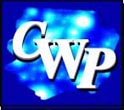Some Important Contributions
Discovered and measured the intrinsic magnetic field of
Ganymede, the largest moon of Jupiter (also the largest moon in the solar system),
with K.K. Khurana, C.T. Russell, R.J. Walker, J. Warnecke, F.V. Coroniti, C. Polanskey, D.J. Southwood,
and C. Schubert.
Reported a magnetic signature associated with Jupiter's moon Io which indicates an
internal field, and estimated the strength of the field.
Observed magnetic signature associated with the asteroid Gaspra, with
K.K. Khurana, R.J. Walker, J.A. Linker, C.T. Russell, D.J. Southwood, and C. Polanskey.
Found magnetic signature indicating an internal field associated with the asteroid Gaspra, with
L. F. Bargatze, K. K. Khurana, D. J. Southwood, R. J. Walker, and P. J. Coleman, Jr.
Theoretical analysis of the propagation of
electromagnetic waves in plasmas taking
Landau damping into account to all orders in the electromagnetic
coupling constant, with D. F. DuBois and V. Gilinsky.
Some Important Publications
"Discovery of
Ganymede's magnetic field by the Galileo spacecraft" with K.K. Khurana, C.T. Russell, R.J. Walker, J. Warnecke,
F.V. Coroniti, C. Polanskey, D.J. Southwood, and C. Schubert,
Nature, 384: 537
(1996).
"A magnetic signature at Io: Initial
report from the Galileo magnetometer" with K.K. Khurana, R.J. Walker, J.A. Linker, C.T. Russell,
D.J. Southwood, and C. Polanskey,
Science, 273: 337 (1996).
"Magnetic signatures near Galileo's
closest approach to Gaspra", with
L. F. Bargatze, K. K. Khurana, D. J. Southwood,
R. J. Walker, and P. J. Coleman, Jr.,
Science, 261: 331 (1993).
"Propagation of
electromagnetic waves in plasmas", Phys. Rev. 129: 2376 (1962)
with D. F. DuBois and V. Gilinsky.
Honors
Radcliffe Institute Fellow 1965-1966
John Simon Guggenheim Fellow 1973-1974
Radcliffe Graduate Society Medal 1983
Harvard University 350th Anniversary Alumni Medal
NASA Group
Achievement Award for Galileo Ida Encounter/Dactyl Discovery Team 1995
NASA Group Achievement Award for the Project Galileo Team 1996
Member American Academy of Arts and Sciences 1998
Member National Academy of Sciences (U.S.) 2000
Jobs/Positions
1955-1971 Consultant in Physics, The RAND Corporation, Santa Monica, CA
1967-1971 Assistant Research Geophysicist, Institute of Geophysics and
Planetary Physics, UCLA
1971 Adjunct Assistant Professor, Department of Physics, UCLA
1971-1972 Associate Research Geophysicist, Institute of Geophysics and
Planetary Physics, UCLA
1972-1975 Associate Research Geophysicist, Institute of Geophysics and
Planetary Physics, UCLA
1972-1973 Adjunct Associate Professor, Department of Physics, UCLA
1975-1977 Associate Professor in Residence, Department of Geophysics and
Space Physics, UCLA
1975-1977 Associate Research Physicist, Institute of Geophysics and Planetary
Physics, UCLA
1977-1983 Research Geophysicist, Institute of Geophysics and Planetary
Physics, UCLA
1977-1980 Professor in Residence, Department of Earth and Space Sciences,
UCLA
1980-present Professor (Chair, 1984-1987; Vice-Chair, 1978-1981),
Department of Earth and Space Sciences, UCLA
1983-present Professor, Institute of Geophysics and Planetary Physics, UCLA
Education
A.B. Radcliffe College 1950
A.M. Radcliffe College 1951
Ph.D. Radcliffe College 1957
Sources
M. G. Kivelson
Additional Information/Comments
- Excerpts from a talk Margaret Kivelson gave at Radcliffe College, Harvard
University, May 17, 1997.
"I had low expectations for my career and so did others.
While still in high school, I had been advised to become a dietitian by an uncle
who was a professor. He was well aware of where women with a scientific bent
fit readily into an academic institution, and it wasn't in the physical sciences! But
for someone who was interested in research, in uncovering new ideas and
finding new ways of thinking about old and new problems, for a person who
wanted to be a creative scientist, the university was the place to be. To be sure,
there was employment for scientists outside of academe...but most of the
exciting advcances were occurring in universities."
"Creative science has much in common with other creative arts: painting,
sculpture, poetry, music. A creative scientist applies tools familiar to the artist,
demanding solutions with underlying symmetry, often deliberately broken to
produce special effects, demanding elegance, valuing minimalism, and then
typically supplementing these constraints with the rigor of mathematical analysis.
... Many scientists share a belief-structure that could
well be accepted by contemporary painters and choreographers."
Married to Daniel Kivelson. They have a daughter and a son.
Field Editors: Ferdinand Coroniti/ Nina Byers
<Coroniti@physics.ucla.edu> / nbyers@physics.ucla.edu >
|
 Welcome
to CWP at UCLA
Welcome
to CWP at UCLA  Welcome
to CWP at UCLA
Welcome
to CWP at UCLA